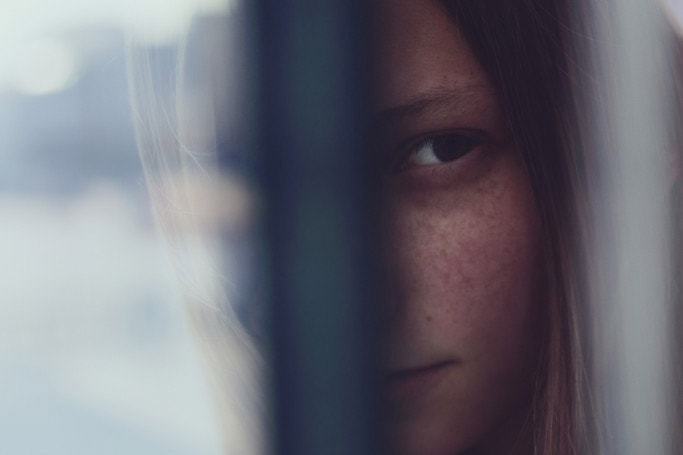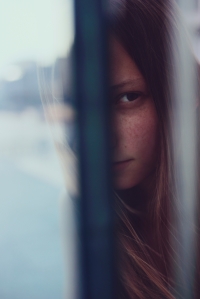What Are You Hiding?

by Kathy Seaton
 I’ve read a lot about the creative process. Because innately, I’m not creative. I’m already thinking, “this blog sucks.” I often wonder why all of you read my 700 words of drivel every week.
I’ve read a lot about the creative process. Because innately, I’m not creative. I’m already thinking, “this blog sucks.” I often wonder why all of you read my 700 words of drivel every week.
Ok, where am I going with this? Re-focus Kathy.
This piece is about learning to allow ourselves to be creative. About how to create something out of nothing. We’re not all born artists, musicians, or writers. But we do have the power to be or to become creative in our own right. And there is creativity in everything we do at work. We don’t have to work in the marketing department to be considered creative. Scientists, mathematicians, teachers, doctors, and parents employ creativity into their jobs everyday, whether they are cognisant of it or not.
There’s been a few constants in what I’ve read about creativity. There is a tension between control and letting go. And there is the notion that nothing, absolutely nothing, is absolute.
So what lies deep within ourselves that tells us that control is king? Why do we always seek out the answer? Why are we afraid to dive into our vulnerability? What is keeping us from letting go? Well, I think its pretty safe to say that all of us operate out of fear. Fear of the unknown and the fear of rejection. We need to find our own place of balance. Our own ability to let go.
We think that we live in a world of absolutes. We’re taught that 1+1=2. So then shouldn’t everything be defined by an equation? I’m sure that many of you have heard about the new K-12 curriculum called the Common Core. Trust me, I do math with my son everyday and I swear I have no idea how he knows 1+1=2. They read, they draw, they make math mountains, whatever… but they do everything we didn’t learn, which was rote memory to solve a problem. For me, that’s a way that I learn to deal with absolutes today, because for me, the Common Core comes out of left field but I have to accept it to help my son. But what I understand now, is that even math isn’t absolute. There are different ways to teach and learn it.
The notion of having to be “creative” totally freaks me out. So I ask myself, and I ask you, where does creativity hide?
Here’s a few simple ways that you can find and unveil your creative expression.
- Pay Attention to Everyday Experiences. If we pay attention to the world around us, we find that creativity grows from everyday experiences, from having a coffee with a friend, eating out at a restaurant, traveling, and to working on a project with a colleague. We just need to pay attention. Paying attention will help us shape our own frame of reference. Sometimes this will work and sometimes it won’t. But the opportunity is there to use experience to create.
- Embrace Stories. We all have stories. From childhood to adulthood, our lives are shaped by our own personal story. Sometimes life experiences that are the most difficult can be the root of creativity. Maybe you had a childhood challenge like not being able to read, or you lost a loved one at a young age, experienced heartbreak, or even worse, lost your home to a fire. Although those can be deeply sad and tragic experiences it is the most constant in human experiences that we have. These can help you build a story. And with a story, creativity is born. Stories create bridges between people and help build relationships. The ability to share and be vulnerable is truly the expression of letting go.
- Push the Limits of What You Can’t Do to Find Your Voice. For instance, I wanted to get into photography. And I wasn’t bad at it, but my composition was seriously lacking. I can remember tossing out film before I even developed it. And in throwing out the prints, I was discarding my love for photography. I guess looking back I was letting go of the photography, but not letting go of the art. There’s something to be said about unveiling your flaws. So I explored art in the form of writing, but there is art in what we do at work. The art of building an extensive spreadsheet, the art of creating a lesson plan for a group of high schoolers, or the art of making a product idea a reality. Whatever it is, don’t let your own personal limitations slow you down. Use them to your advantage.
Know that a creative person is multi-dimensional. Question everything, and know that there are no right or wrong answers. We can all make things happen by asking a few simple questions: why do things happen, how to they happen, and importantly, how do I make them happen.
